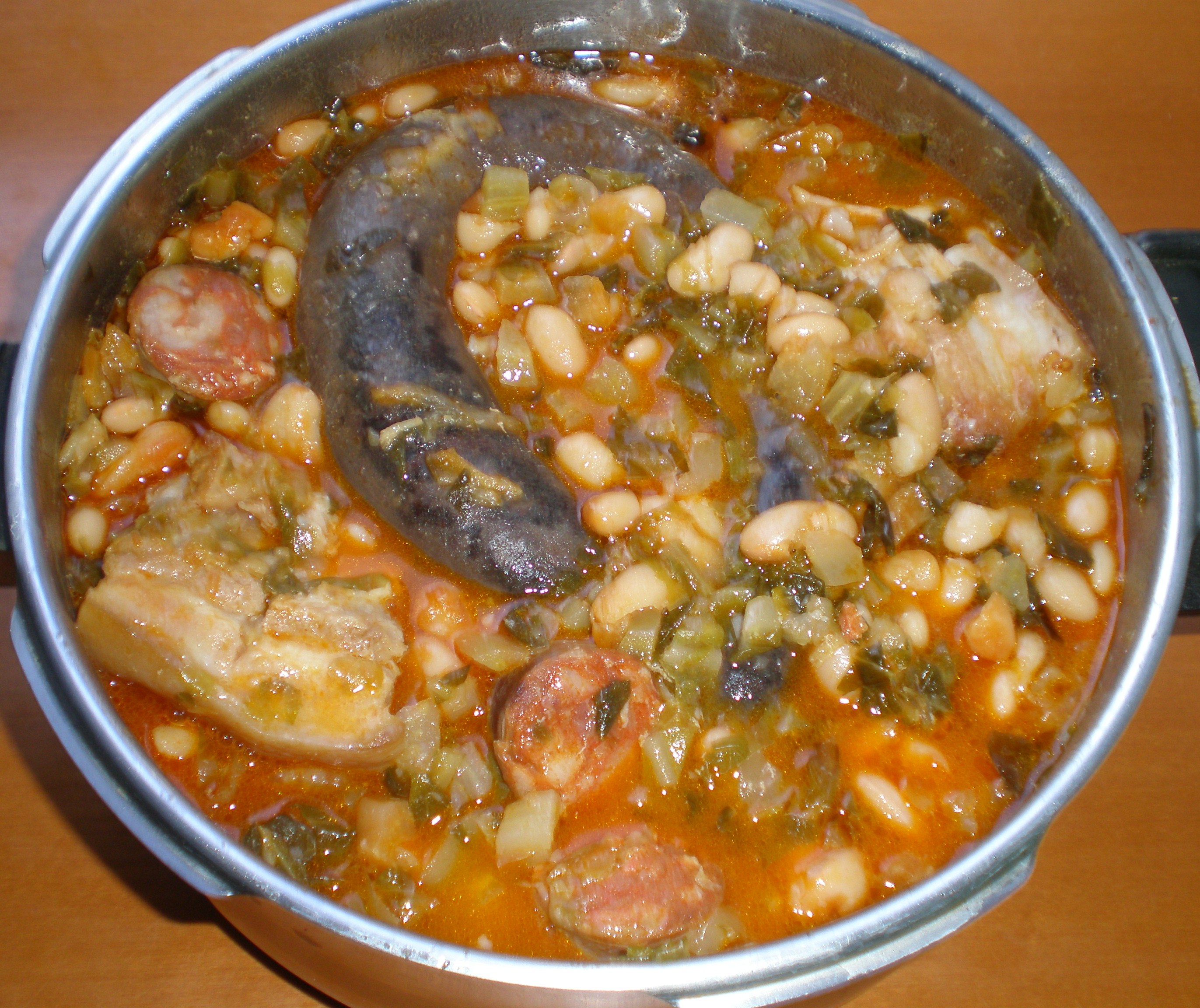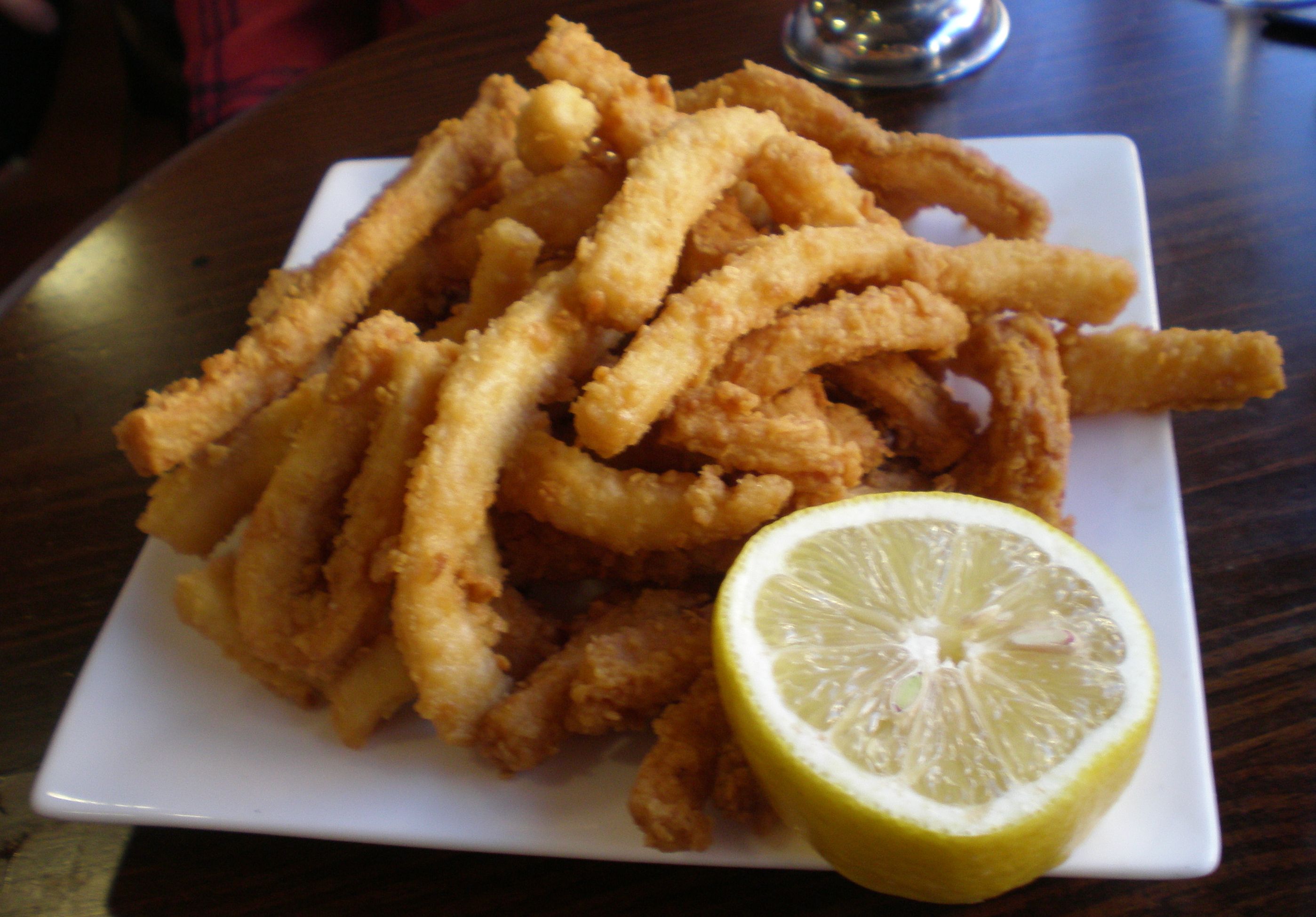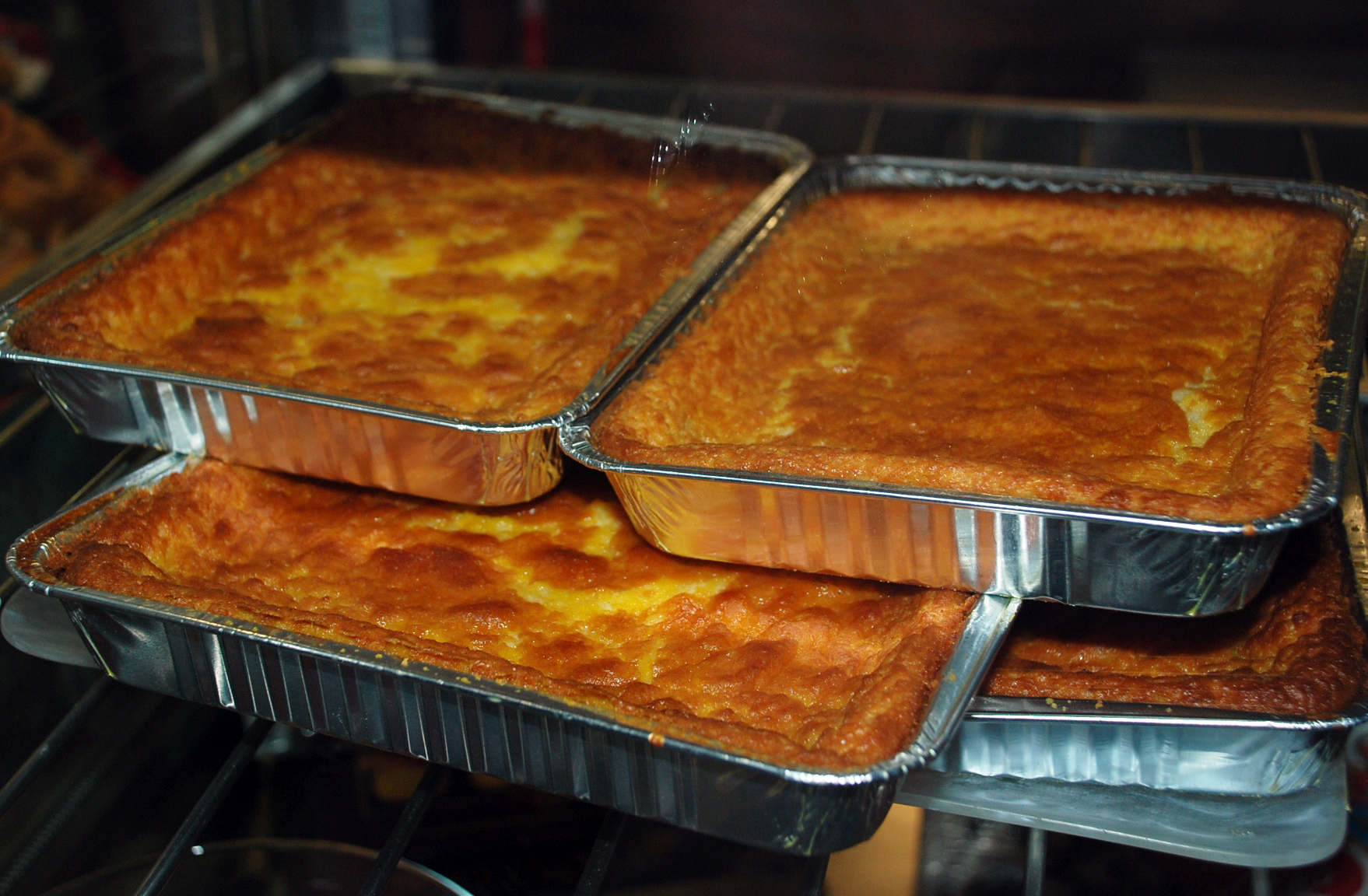Cantabrian Cuisine on:
[Wikipedia]
[Google]
[Amazon]
 Cantabrian cuisine is the cuisine from
Cantabrian cuisine is the cuisine from

 Seafood is widely used, from the entire coast and the Bay of Santander in particular, including
Seafood is widely used, from the entire coast and the Bay of Santander in particular, including
"The txakoli of Burgos Valle de Mena wants OJ" (2005)
elmundovino.elmundo.es; retrieved 19 January 2008. after a major and long-term decline, they are recovering. Two
Cantabria
Cantabria (, ; ) is an autonomous community and Provinces of Spain, province in northern Spain with Santander, Cantabria, Santander as its capital city. It is called a , a Nationalities and regions of Spain, historic community, in its current ...
, an autonomous community in northern Spain. It includes seafood from the Cantabrian Sea
The Cantabrian Sea is the term used mostly in Spain to describe the coastal sea of the Atlantic Ocean that borders the northern coast of Spain and the southwest side of the Atlantic coast of France, included in the Bay of Biscay. It extends from ...
, salmon and trout from the upper basins of the rivers, vegetables and dairy products from the valleys, and veal and game from the Cantabrian mountains
The Cantabrian Mountains or Cantabrian Range () are one of the main systems of mountain ranges in Spain.
They stretch for over 300 km (180 miles) across northern Spain, from the western limit of the Pyrenees to the Galician Massif ...
.
Fish and seafood

 Seafood is widely used, from the entire coast and the Bay of Santander in particular, including
Seafood is widely used, from the entire coast and the Bay of Santander in particular, including clam
Clam is a common name for several kinds of bivalve mollusc. The word is often applied only to those that are deemed edible and live as infauna, spending most of their lives halfway buried in the sand of the sea floor or riverbeds. Clams h ...
s, mussel
Mussel () is the common name used for members of several families of bivalve molluscs, from saltwater and Freshwater bivalve, freshwater habitats. These groups have in common a shell whose outline is elongated and asymmetrical compared with other ...
s, pod razors, cockles, crabs
Crabs are decapod crustaceans of the infraorder Brachyura (meaning "short tailed" in Greek), which typically have a very short projecting tail-like abdomen, usually hidden entirely under the thorax. Their exoskeleton is often thickened and ha ...
, barnacle
Barnacles are arthropods of the subclass (taxonomy), subclass Cirripedia in the subphylum Crustacean, Crustacea. They are related to crabs and lobsters, with similar Nauplius (larva), nauplius larvae. Barnacles are exclusively marine invertebra ...
s, crayfish
Crayfish are freshwater crustaceans belonging to the infraorder Astacidea, which also contains lobsters. Taxonomically, they are members of the superfamilies Astacoidea and Parastacoidea. They breathe through feather-like gills. Some spe ...
, snails
A snail is a shelled gastropod. The name is most often applied to land snails, terrestrial molluscs, terrestrial pulmonate gastropod molluscs. However, the common name ''snail'' is also used for most of the members of the molluscan class Gas ...
, lobster
Lobsters are Malacostraca, malacostracans Decapoda, decapod crustaceans of the family (biology), family Nephropidae or its Synonym (taxonomy), synonym Homaridae. They have long bodies with muscular tails and live in crevices or burrows on th ...
, and squid
A squid (: squid) is a mollusc with an elongated soft body, large eyes, eight cephalopod limb, arms, and two tentacles in the orders Myopsida, Oegopsida, and Bathyteuthida (though many other molluscs within the broader Neocoleoidea are also ...
. Fish include sea bass, hake
Hake is the common name for fish in the Merlucciidae family of the northern and southern oceans and the Phycidae family of the northern oceans. Hake is a commercially important fish in the same taxonomic order, Gadiformes, as cod and haddo ...
, scorpion fish, anchovy
An anchovy is a small, common forage fish of the Family (biology), family Engraulidae. Most species are found in marine waters, but several will enter brackish water, and some in South America are restricted to fresh water.
More than 140 speci ...
, sardine
Sardine and pilchard are common names for various species of small, oily forage fish in the herring suborder Clupeoidei. The term "sardine" was first used in English during the early 15th century; a somewhat dubious etymology says it com ...
, and albacore
The albacore (''Thunnus alalunga''), known also as the longfin tuna, is a species of tuna of the order Scombriformes. It is found in temperate and tropical waters across the globe in the epipelagic and mesopelagic zones. There are six distinct ...
.
The albacore
The albacore (''Thunnus alalunga''), known also as the longfin tuna, is a species of tuna of the order Scombriformes. It is found in temperate and tropical waters across the globe in the epipelagic and mesopelagic zones. There are six distinct ...
or ''bonito del norte'' is used in one of the most typical dishes of the region: '' marmita'' or ''sorropotÚn''. Some of the most renowned Cantabrian dishes are hake in green sauce (''merluza en salsa verde''), squid with onions (''maganos encebollados'') and cuttlefish in its ink sauce (''cachon en su tinta''), and clam casserole. "Rabas" (deep-fried squid sticks) is the most popular snack on the coast, typically companied with a white wine or a vermouth.
Processed anchovies from the town of SantoÃąa
SantoÃąa is a town in the eastern coast of the autonomous community of Cantabria, on the north coast of Spain. It is situated by the bay of the same name. It is from the capital Santander, Cantabria, Santander. SantoÃąa is divided into two zones, ...
are highly appreciated worldwide.
Meats
Veal
Veal is the meat of Calf (animal), calves, in contrast to the beef from older cattle. Veal can be produced from a calf of either sex and any List of cattle breeds, breed; however, most veal comes from young male calves of Dairy cattle, dairy b ...
is widely consumed, often from the Tudanca cattle. The National Cattle Fair of Torrelavega, the largest cattle fair in Spain, is held in Cantabria. Game is also of high quality: deer
A deer (: deer) or true deer is a hoofed ruminant ungulate of the family Cervidae (informally the deer family). Cervidae is divided into subfamilies Cervinae (which includes, among others, muntjac, elk (wapiti), red deer, and fallow deer) ...
, roe deer, and wild boar
The wild boar (''Sus scrofa''), also known as the wild swine, common wild pig, Eurasian wild pig, or simply wild pig, is a Suidae, suid native to much of Eurasia and North Africa, and has been introduced to the Americas and Oceania. The speci ...
. Pork
Pork is the culinary name for the meat of the pig (''Sus domesticus''). It is the most commonly consumed meat worldwide, with evidence of pig animal husbandry, husbandry dating back to 8000â9000 BCE.
Pork is eaten both freshly cooke ...
is a key element for the '' cocido montaÃąÃĐs'', literally 'mountain stew', with bean
A bean is the seed of some plants in the legume family (Fabaceae) used as a vegetable for human consumption or animal feed. The seeds are often preserved through drying (a ''pulse''), but fresh beans are also sold. Dried beans are traditi ...
s, cabbage
Cabbage, comprising several cultivars of '' Brassica oleracea'', is a leafy green, red (purple), or white (pale green) biennial plant grown as an annual vegetable crop for its dense-leaved heads. It is descended from the wild cabbage ( ''B.& ...
, and other ingredients.
Pastry
Cantabrian pastries include the traditional '' sobaos'' and '' quesada pasiega''.Puff pastry
Puff pastry, also known as , is a light, flaky pastry, its base dough () composed of wheat flour and water. Butter or other solid fat () is then layered into the dough. The dough is repeatedly rolled and folded, rested, re-rolled and folded, encas ...
is widely used, with different names in different regions: '' corbatas'' in Unquera and San Vicente de la Barquera
San Vicente de la Barquera is a List of municipalities in Cantabria, municipality of Cantabria in northern Spain. It had a population of 4,412 in 2002. Tourism is its main activity due to the area's natural environment and heritage. Approximately ...
, ''polkas
Polka is a dance style and musical genre, genre of dance music in originating in nineteenth-century Bohemia, now part of the Czech Republic. Though generally associated with Culture of the Czech Republic, Czech and Central Europe, Central E ...
'' in Torrelavega, and ''sacristanes'' in LiÃĐrganes. Other notables sweets are ''s'' and ''canÃģnigos'', both of LiÃĐbana; ''corazones'' of LiÃĐrganes, the ''palucos'' of CabezÃģn de la Sal; and the '' tortos'' and '' pantortillas'' of Reinosa
Reinosa is a municipality in Cantabria, Spain. , it has 10,307 inhabitants. The municipality, one of the smallest by land area in Cantabria, is notable for being one of the nearest towns to the headwaters of the Ebro River. It is surrounded by th ...
. Other desserts not of Cantabrian origin are rice pudding
Rice pudding is a dish made from rice mixed with water or milk and commonly other ingredients such as sweeteners, spices, flavourings and sometimes eggs.
Variants are used for either desserts or dinners. When used as a dessert, it is commonly c ...
, '' natillas'', '' leche frita'', and fruit jams.
Dairy product
Dairy products or milk products are food products made from (or containing) milk. The most common dairy animals are cow, water buffalo, goat, nanny goat, and Sheep, ewe. Dairy products include common grocery store food around the world such as y ...
s include Cantabrian cream cheese; '' picÃģn Bejes-Tresviso'' in Tresviso and its neighboring town; smoked cheeses (named for specific places) such as Ãliva or Pido; and the ', made with a mixture of cow and sheep milk.
Alcoholic beverages
'' Orujo'' is the Cantabrianpomace brandy
Pomace spirit (or pomace brandy) is a Distilled beverage, liquor distilled from pomace that is left over from winemaking, after the grapes are pressed (wine), pressed. It is called marc in both English and French, but "grappa" in Italian and "baga ...
.
Historically, cider
Cider ( ) is an alcoholic beverage made from the Fermented drink, fermented Apple juice, juice of apples. Cider is widely available in the United Kingdom (particularly in the West Country) and Ireland. The United Kingdom has the world's highest ...
and '' chacoli'' or ''txakoli'' wine were a specialty;"In fact, chacoli until the late 19th century a widespread product in the Cantabrian, and half a century and the production of the province of Santander-today, autonomous community of Cantabria, quite widely exceeded that of the Basque provinces, according to data collected Huetz Professor of Bordeaux Alain Lemps in his landmark study ''Vignobles et vins du Nord-Ouest de l'Espagne''."The txakoli of Burgos Valle de Mena wants OJ" (2005)
elmundovino.elmundo.es; retrieved 19 January 2008. after a major and long-term decline, they are recovering. Two
Spanish wine
Spanish wine ( or ) includes red wine, red, white wine, white, and sparkling wine, sparkling wines produced throughout the country. Located on the Iberian Peninsula, Spain has over planted in wine grapes, making it the most widely planted wine- ...
s (''vinos de la tierra'') with '' denominaciÃģn de origen calificada'' (protected geographical status
Three European Union schemes of geographical indications and traditional specialties, known as protected designation of origin (PDO), protected geographical indication (PGI), and traditional speciality guaranteed (TSG), promote and protect na ...
) from Cantabria are Costa de Cantabria and LiÃĐbana, named after the localities of their production.
References
{{DEFAULTSORT:Cantabrian Cuisine Spanish cuisine